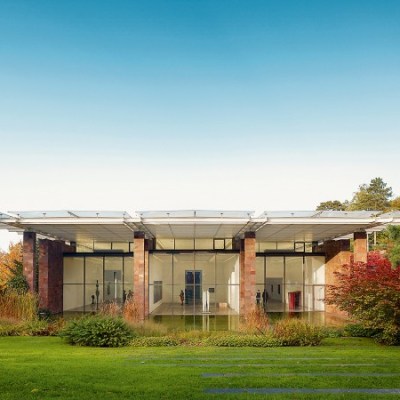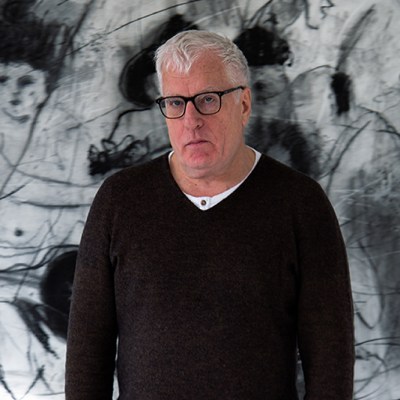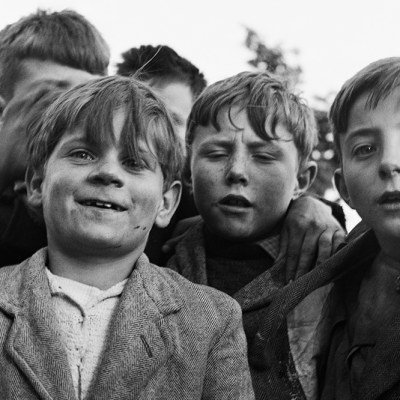From the April 2023 issue of Apollo. Preview and subscribe here.
Seen from above on a clear, sunny day, the bright blue Lake Geneva in Ferdinand Hodler’s Le lac Léman vu de Chexbres (1904) seems to stretch almost as far as the eye can see before blending into a mountainous horizon. The painting is thought to have been partly inspired by the views Hodler glimpsed on his frequent train journeys between his native Bern and Geneva, where he moved in his late teens. For more than a century, locals will have recognised the scene and many other of the artist’s distinctive landscapes, on visits to the nearby Musée cantonal des Beaux-Arts (MCBA) in Lausanne. Positioning the viewer on top of the world, it captures the dreamier, more sentimental possibilities of train travel, even if it is now hard to grasp the excitement that such journeys must once have inspired. This is particularly true of Switzerland, where a rich diversity of languages and cultures were historically disconnected by the Alps. By the second half of the 19th century, they had been united by the densest rail network in Europe. It is little surprise then, that at the beginning of the 21st century, as fast-expanding cities scramble to find new spaces, these historic buildings and their bustling, well-connected neighbourhoods are first in line to be redeveloped and, perhaps, even redefined.
This is the proposition that seems to be made by Plateforme 10, a burgeoning arts district in Lausanne created by the relocation of three of the city’s major public museums to a disused train yard tucked just beyond the station. The idea grew out of the pressing need to find more space for the MCBA, the region’s main art museum, which had long outgrown the confines of the Palais de Rumine, a 19th-century mansion in the centre of town. Its new home, a mammoth concrete mass, clad in brick with vertical fins punctuating the north side, is designed by the Barcelona-based architects Barozzi Veiga and opened in October 2019. The grey monolith is very much in line with contemporary, international tastes but in this context at first seemed like a strange, foreign transplant, cutting a jarringly pristine figure against the battered backdrop of active train tracks; the periodic rattle of freight trains is a constant. The building could only have been understood as a statement of intent.
And so it was. In June 2022, the MCBA was joined by an adjacent structure designed by Portuguese practice Aires Mateus to house both the Museum of Contemporary Design and Applied Arts (MUDAC) and Photo Elysée. This smaller, square building is cut through by a zigzagged strip of window that welcomes daylight and emits a glowing artificial beam at night. A row of repurposed train sheds with arched entrances, the sole surviving brickwork from the district’s past life, is slowly being filled by cafes and temporary exhibition spaces. Standing opposite the MCBA, they round off a new oblong public plaza of some 25,000 square metres. This space will, it is hoped, attract aimless wanderers, tempting them to stop and take in their surroundings.
Inside, the length of the MCBA and its spacious foyer with a central arched window has clearly borrowed elements from the architecture of a typical station hall, although its comparatively calm atmosphere is unfortunately, to my eye, interrupted by a permanent installation in the form of a tree by Giuseppe Penone. The building is halved internally by a long stretch of staircase, creating an equal division of space between temporary exhibitions and permanent displays. At any one time, the building can easily accommodate two large-scale shows running alongside a smaller solo exhibit in the Espace Projet on the ground floor. This arrangement leaves room for what feels like a pretty slim permanent collection, though what it lacks in quantity it makes up for in quality.
The Birth of the Virgin (c. 1320–30) Francesco da Rimini (documented 1333–48). Musée cantonal des Beaux-Arts de Lausanne. Photo: © Musée cantonal des Beaux-Arts de Lausanne
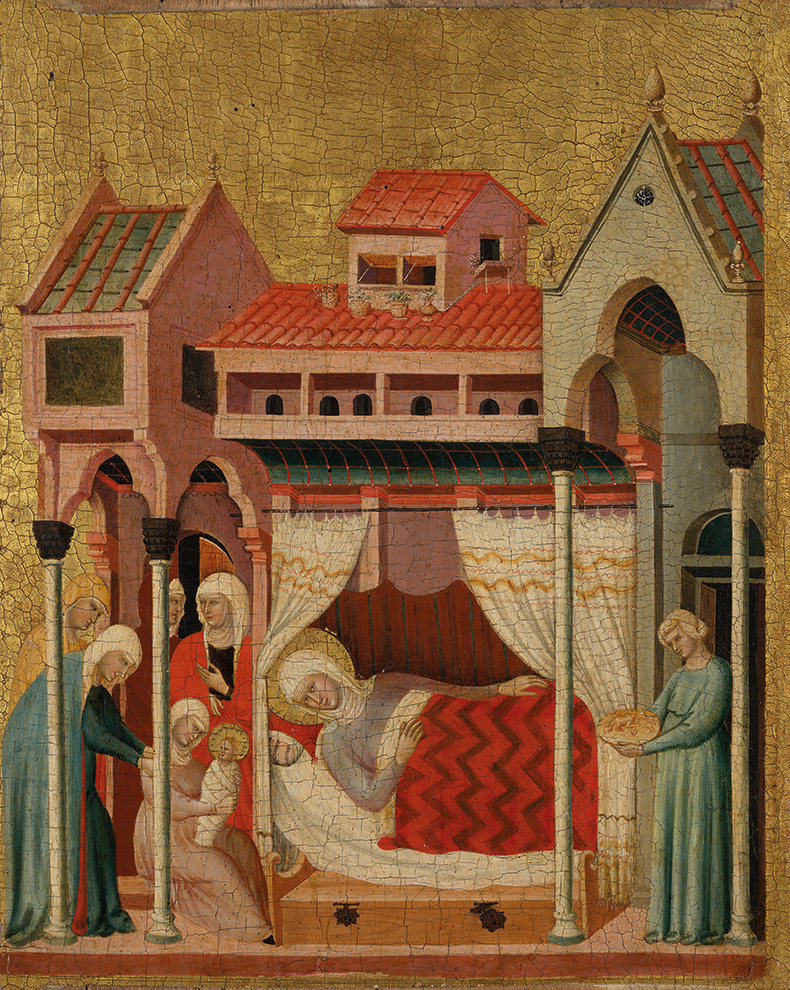
My visit in early March coincides with the installation of new exhibitions, which leaves half the building out of bounds. Instead I embrace the prospect of getting lost in the permanent displays, although it soon becomes apparent that there will be plenty of time for a trip to the cafe, too. Despite a collection of some 10,000 items, just four rooms on the first floor display works before 1950. The first room, ‘The road to modernity…’, starts in the early 1300s with Francesco da Rimini’s tempera interpretation of the Birth of the Virgin, but only a scant few canvases later we have already arrived in the 19th century. This speedy summary of religious art, portraiture and history painting has slowed slightly by the second room, which is filled with idyllic, alpine landscapes and charming genre scenes that are clearly linked by their attempts to construct a Swiss identity.
This strong national focus and the emphasis on art produced after 1800 can both be linked to the collection’s humble beginnings as just 650 works belonging to Abraham-Louis-Rodolphe Ducros, a local painter who set up a drawing school in Lausanne. After his death in 1810, the public launched a subscription to keep the works together and in 1816 they were bought by the regional government, the Canton of Vaud, to go on public display in the central square of Place de la Riponne before moving to the Palais de Rumine in 1906. Over these two centuries, a series of savvy directors worked hard to expand the holdings by looking out for local opportunities. The first painting by Félix Vallotton was acquired in 1896 (it now has 556 of the artist’s works). Notable acquisitions in the 20th century include Charles Gleyre’s studio collection in 1908 and 623 drawings by Louis Soutter in the 1950s.
The result is a collection that, although it contains some of Switzerland’s most famous artists such as Hodler, Albert Anker, Paul Klee and Giacometti, is more memorable for introducing the viewer to the nation’s lesser known but evidently talented figures, such as Charles Olsommer, Augusto Sartori, Hans Sandreuter, Félix Labisse, Frédéric Rouge and Lausanne’s own Ernest Biéler, François Bocion and Théophile Steinlen. A revelation to me is the work of Louise Catherine Breslau, who appears in profile in La vie pensive (1908), a triple portrait that records her partner Madeleine Zillhardt lost in dreamy contemplation and their magnificent borzoi dog. In the final room, a whole wall is given over to Alice Bailly’s cubist-inspired compositions while a modest selection of more familiar names, including a trio of still lifes starring apples by Cézanne, Gauguin and Matisse, as well as works by Courbet and Monet, help to fill in the international picture.
White cubes reign again on the second floor, which is dedicated to contemporary art and is markedly less Swiss. Artists such as Cy Twombly and Ana Mendieta are outnumbered by an impressive array of works by living artists, including Kader Attia, Anish Kapoor, Alfredo Jaar, Bruce Nauman and William Kentridge, whose animated Anti-Mercator (2010–11) is a particularly absorbing piece of video art.
Pensive Life (1908) Louise Breslau (1856–1927). Musée cantonal des Beaux-Arts de Lausanne. Photo: © Musée cantonal des Beaux-Arts de Lausanne
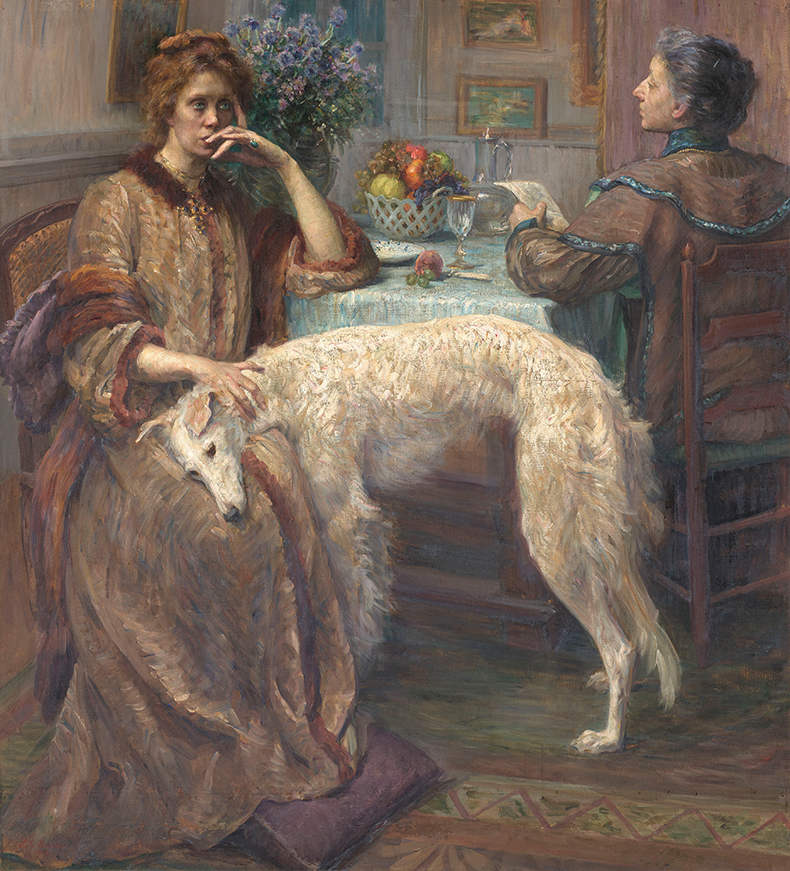
Anyone wishing to delve a bit deeper can head over to the museum’s Espace Focus, which highlights one aspect of the collection. A recent exhibition of delicate drawings and preparatory studies by Balthus reflected the long-term deposit with the museum of the Balthus Fund by the artist’s widow Countess Setsuko Klossowska de Rola and her daughter in 2019. A larger library of artworks, photographs, private documents and published catalogues, much of which has also been digitised, is currently accessible only to researchers on application.
Plateforme 10, the umbrella foundation which oversees the MCBA and its two neighbouring museums, is headed by the historian Patrick Gyger. ‘I would not have been interested in being the director of one of the museums,’ he tells me. ‘This isn’t just a museum moving to a new location. What we are doing is creating a dialogue between three museums.’ Gyger finds the present moment almost auspicious. ‘We can see that people are actually using museums as vehicles for discourse,’ he notes of the recent attacks on art by climate protestors, a positive development in as much as it rescues these institutions from ‘the fate of operas, from being completely disconnected from the general audience and [from having] only older generations of white, wealthy, educated people going through the door.’
‘Museums are basically time machines that take objects from the past and present and project those objects into the future,’ Gyger adds, ‘so we are constantly thinking about the future.’ This sort of rhetoric still feels like a fairly recent departure from the idea of cultural institutions as stable, even cautious, guardians of the past, but the hope for a more ambitious and advanced MCBA has been a very long time coming. In fact, the people of Lausanne have been waiting more than a century since Émile Bonjour, the museum’s director from 1894 to 1935, first alerted the canton to the lack of adequate space at the Palais de Rumine in 1915. Photos of the time reveal a packed, salon-style hang and still today the Palais de Rumine, for all its majesty, is crammed to capacity with four state museums dedicated to geology, coinage, zoology and archaeology and history. Visitors will find rooms not much wider than a corridor filled with fusty cabinets of taxidermied creatures and cases of old bones and flint stone. These sights, combined with the knowledge that these pokey halls lack even basic climate controls, make it hard to believe it wasn’t until 1991 that the Canton’s council finally agreed on the move. A site in Bellerive on the banks of Lake Geneva was suggested a decade later but when put to the public by a 2008 referendum the proposal was refused for reasons that turned out to be territorial. ‘The lake is absolutely sacred here,’ Gyger explains.
The site beside the train station was finally approved in 2009 and it didn’t take long for the canton to spot an opportunity to make better use of all its cultural holdings to create a new institution with national and international appeal. Capitalising on this fortuitous turn of events, MUDAC – whose collection is particularly strong in glass art and jewellery – was moved from its former location opposite the city’s magnificent gothic cathedral. The Musée de l’Élysée was also moved from a repurposed 18th-century townhouse and rebranded as the Photo Élysée to better reflect its specialisation. Founded in 1985, the museum has a collection of more than 1.2m items that trace the history of the artform from the 1840s to the present day. These include the archives of important Swiss photographers such as Sabine Weiss, René Burri, Nicolas Bouvier and Jean Mohr, as well as those of Jan Groover, Gertrude Fehr and Charlie Chaplin. Despite this, both Photo Élysée and MUDAC have opted against having a permanent public display, instead using their collections as the basis of a rich, ever-rotating temporary exhibition programme.
A trip to Photo Elysée proves there is, nonetheless, no shortage of things to see. Hidden away in a basement, the museum’s new subterranean space can house three separate exhibitions at a time. The most eye-catching on arrival when I visit is ‘Under Your Smell’ (until 21 May), the result of a collaboration between Jean Paul Gaultier and the École cantonale d’art de Lausanne (ECAL) that has prompted students to produce visual interpretations of the French fashion house’s perfumes. The experimental spirit of these brightly coloured and irreverent photos is carried into an immersive, multimedia installation. Some images have been printed on to gauzy sheets of fabric that, suspended from above, layer over each other from every possible angle. Others have been translated on to large rectangular bean bags stacked in a welcoming heap on the floor just below a moving-image projection on the underside of the staircase.
Playing with a Fan (1913), Alice Bailly. Musée cantonal des Beaux-Arts de Lausanne. Photo: © Musée cantonal des Beaux-Arts de Lausanne
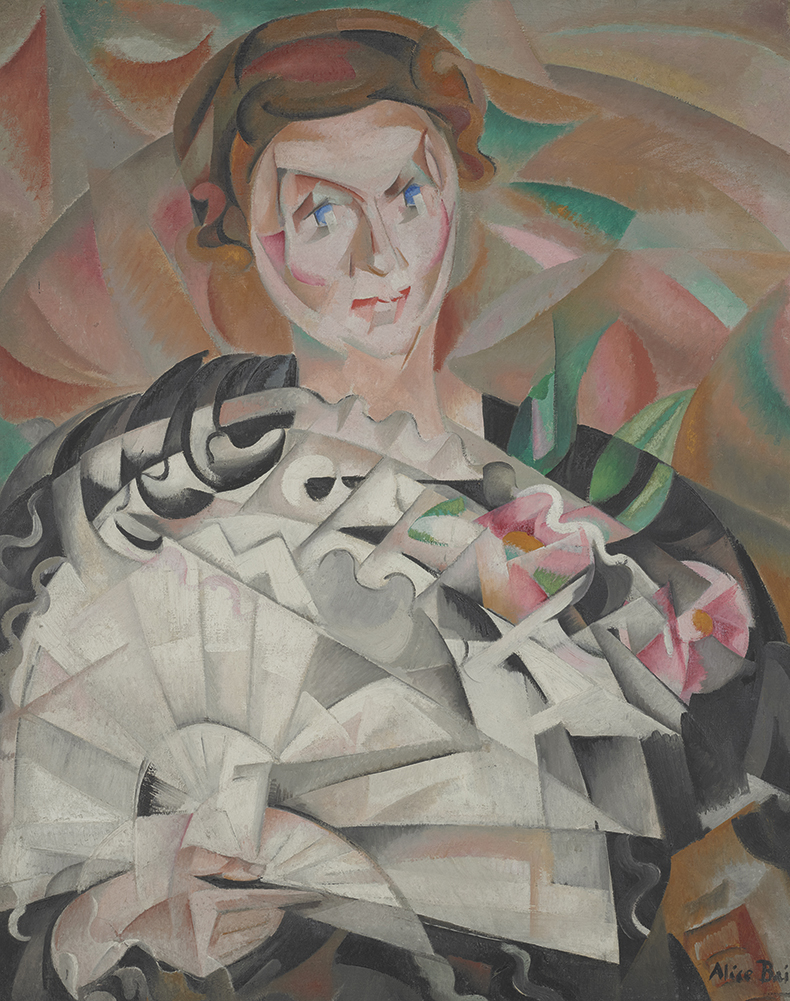
These inventive tricks are supported by Paris-based set designers Studio Adrien Gardère. Noting the sophisticated lighting and rigging fixtures above, Photo Élysée’s director Nathalie Herschdorfer sees the space more like a theatre than a traditional museum. ‘When you build, you build for the next 100 years, so it has to be very flexible,’ she says. ‘We know how much things change. Photography uses different scales and supports, be it a book or magazine, a projection or a printed fabric seen in the street.’ More conventional formats haven’t been forgotten. Winding around the outside of the installation is an exhibition tracing the evolving use of blur in photography since the 19th century. Though its maze of small rooms can get easily congested, their construction out of temporary walls makes it possible to peek backwards and forwards between sections, creating an open-plan atmosphere reminiscent of the Barbican Art Gallery in London.
As well as the significant increase in space, the multi-institutional approach being tested by Plateforme 10 also allows these three museums to pool their resources, increase their audiences and raise their visibility. Fund-raising is one of the many more tiresome processes central to running a museum that is now being taken care of by a shared, centralised back office. This arrangement is principally intended to free up more time and effort for ambitious programming, with these efforts loosely coordinated by the foundation to ensure that the site has at least one crowd-pleasing exhibition at any one time. ‘If we open niche stuff in all three museums at the same time we could alienate the public,’ Gyger says. ‘What is driving us is always to have people see something that they hadn’t planned to see,’ he adds, noting that roughly a third of the audience for their recent Lubaina Himid show (which travelled from Tate Modern) came after visiting MUDAC’s more popular exhibit about chairs curated by the American theatre director Robert Wilson.
These sorts of decisions are encouraged by a combined ticket for all three museums that works out cheaper than even just two separate tickets. The MCBA’s notably spare permanent offering also turns out to be strategic. ‘The main competition for the temporary exhibitions here is the permanent exhibition,’ Gyger says. ‘Once people have spent two hours seeing a very big permanent show for free, they’re not necessarily willing to pay to see a temporary show.’ As the site develops, however, the foundation won’t be able to prevent green spaces, pop-ups, performances and other events from vying for audiences’ attention.
Plateforme 10 welcomed 230,000 visitors in its first six months, of which around two thirds were local and another 15 per cent German or Italian-speaking nationals. Unmoved by these promising numbers, however, Gyger won’t be ready to appraise the project for some time yet. ‘We’ve seen too many places start on a high and then crash after a couple of years,’ he says. Instead, his attention remains focused on a single goal. ‘We’re trying to write a narrative for this district and make it come alive.’
From the April 2023 issue of Apollo. Preview and subscribe here.
